- Home
- slideshows
- miscellaneous
- We compared the new millennial pink KitKat to 8 crazy flavours from Japan - and the winner was clear
We compared the new millennial pink KitKat to 8 crazy flavours from Japan - and the winner was clear
Behold the Japanese KitKats in all their glory.

The first flavour I tried was Shizuoka Wasabi.
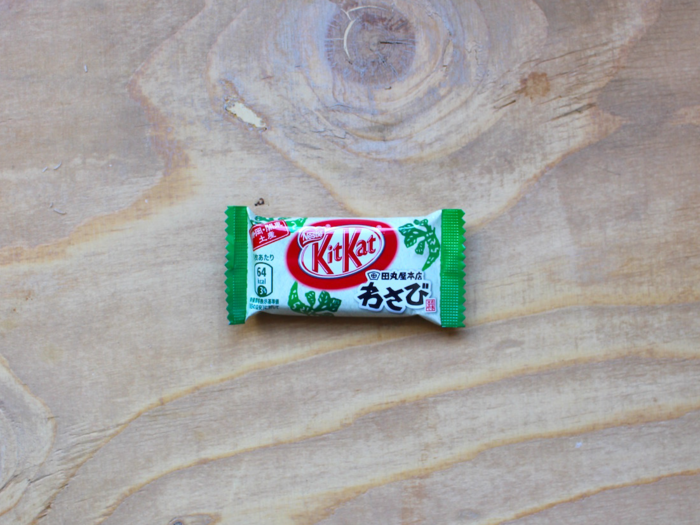
You may associate wasabi more with sushi than a chocolately treat, but the Wasabi KitKat was an unexpected triumph.
At first, it just tastes like chocolate, but as soon as you swallow the mustardy heat hits you in the back of the throat. Fortunately, the spicy kick is more of a tap, and the subtlety of the heat is actually quite pleasant.
Score: 7/10.
Next up was Strawberry.
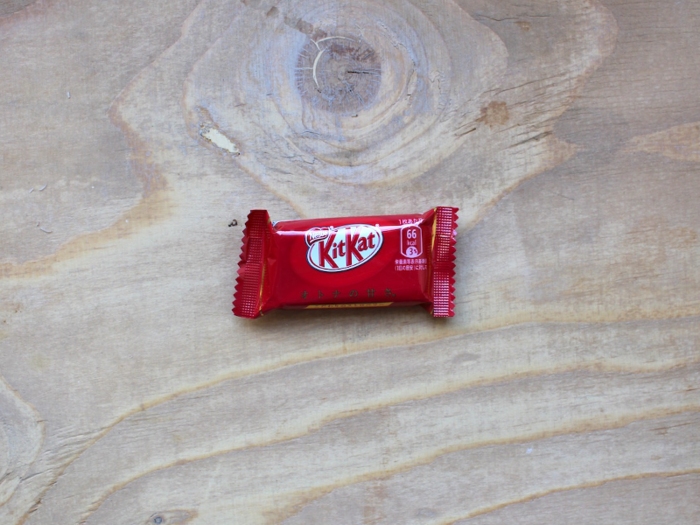
The Strawberry KitKat smelled hugely artificial, like a McDonald's strawberry milkshake. The taste pretty much exactly aligned with the smell — it was sickly sweet with an artificial, plasticky aftertaste. Not good.
Score: 3/10.
Then came the special edition Amaou Strawberry.
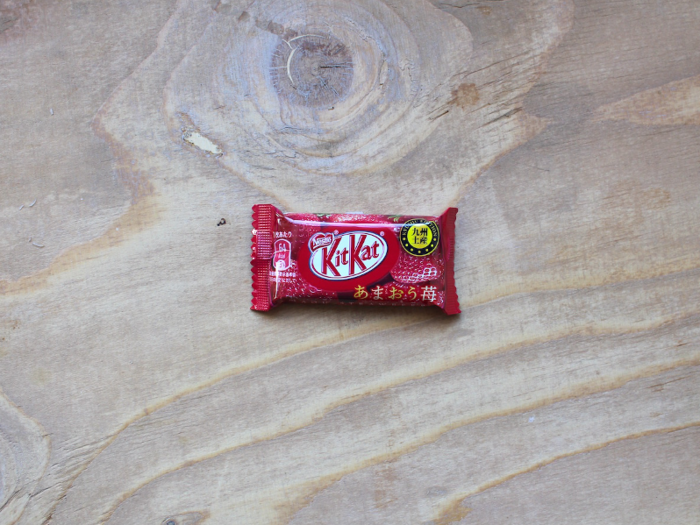
The Amaou Strawberry had a much more subtle perfume. The wafer on mine was incredibly stale, but the bars had travelled all the way from Japan. Nevertheless, the flavour is much more natural than the regular strawberry. If you're going to go for a strawberry KitKat from Japan, make sure its Amaou.
Score: 6/10.
Purple Sweet Potato came after.
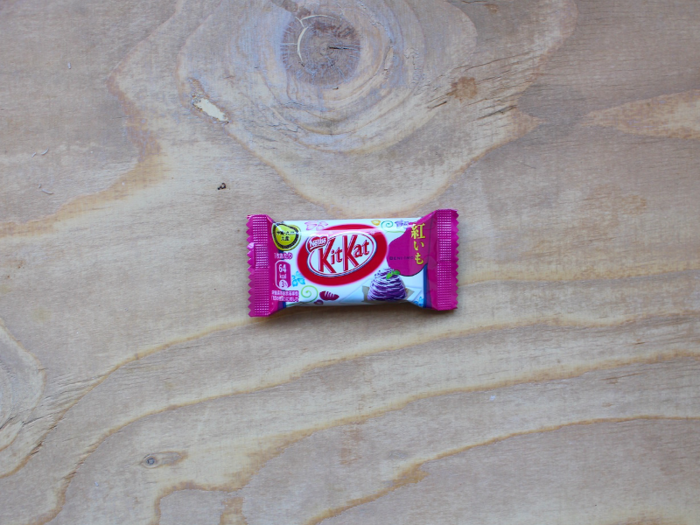
This sounded all sorts of wrong, but I was prepared to keep an open mind.
I was right — it was outright bizarre.
It wasn't as sweet as the other bars and had a faintly disgusting root vegetable taste. I would recommend leaving sweet potatoes to savoury items.
Score: 3/10.
Next I tried the trendy Matcha Green Tea...
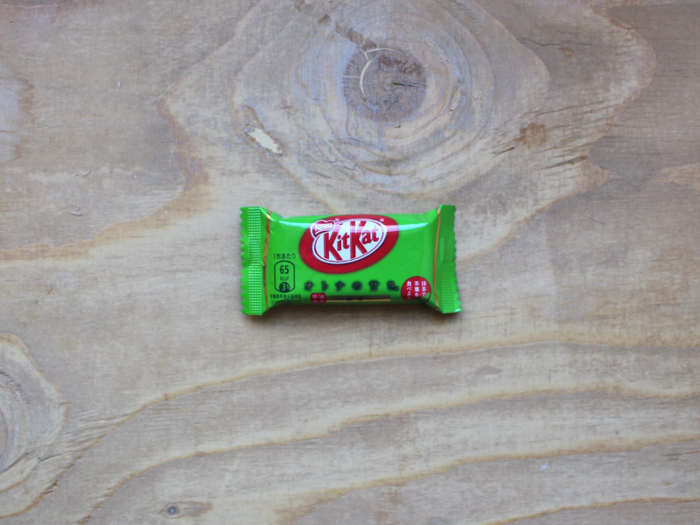
I'd heard a lot about the Green Tea KitKats before tasting, as they're a typical gift for tourists to bring back home — a taste of Japan in a neatly packaged green wrapper.
The reality, though, was a bitter disappointment. The flavour was very artificial and completely overwhelmed by the sweetness of the chocolate.
Score: 4/10.
...Followed by the special edition Kyoto Matcha.
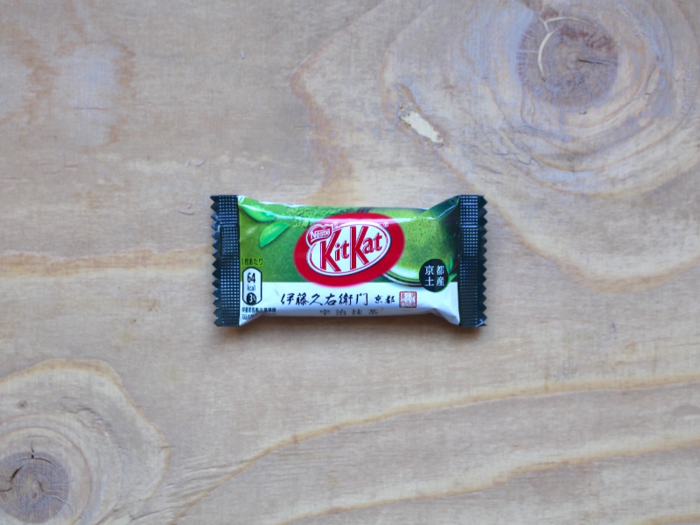
Who needs one edition of the Matcha Green Tea KitKat when you can have two? As with the Amaou Strawberry, this special regional edition had a more refined flavour than the original. The bitterness of the earthy tea flavours was complemented by the sweet, white chocolate surrounding.
This is king of the Japanese KitKats.
Score: 8/10.
Shinshu Apple was the next contender.
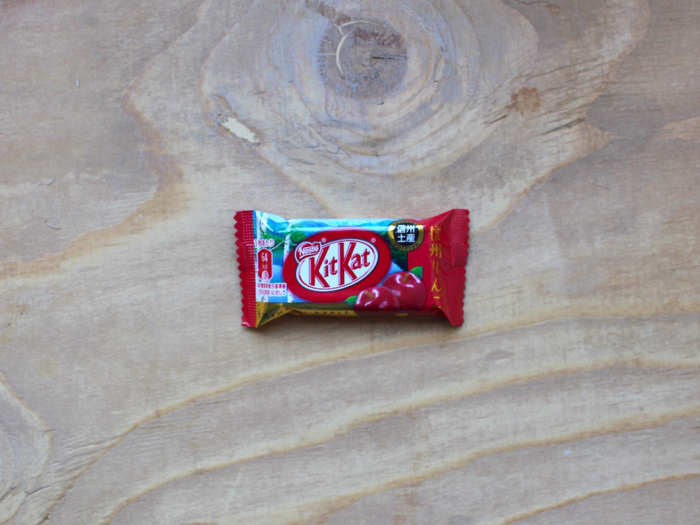
The apple scent was immediately overpowering as soon as I opened the wrapper. Shinshu is reportedly famous for the apples grown in the region — however, if they taste anything like the KitKat edition, then tourists are in for a nasty surprise. The flavour was totally artificial and more reminiscent of apple candy than actual fruit.
This might be the worst one yet.
Score: 1/10.
Next Up? The Azuki Sandwich.
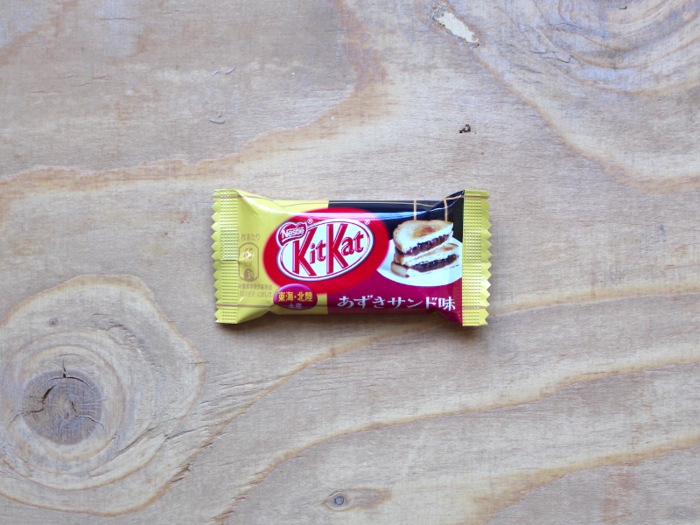
Azuki, or red bean, is a popular flavour in East Asian cuisine and is often boiled with sugar to make red bean paste.
Red bean is usually cooked for auspicious occasions and, therefore, Nestlé is not the first company to piggy-back on the ingredient's heritage — in 2009, Pepsi released an azuki-flavoured edition of its soda. According to Japan Times, the colour red was once thought to have magical powers in Japan.
To my Western palate, the red bean flavour was subtle but jarring, and had a slightly raw vegetable tang to it.
Score: 2/10.
Last but not least was the Ruby — and the winner was clear.
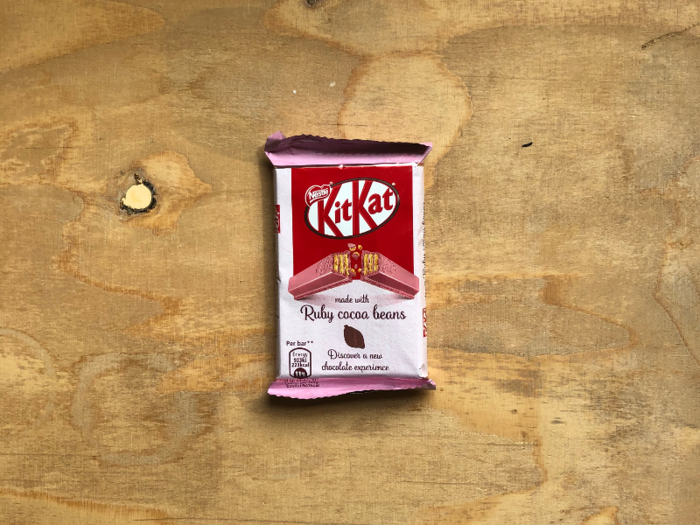
Finally, it was time to try Britain's new KitKat Ruby.
Unlike Japan's pink strawberry editions, which are made with white chocolate and strawberry flavourings, the Ruby uses ruby cacao that produces a natural pink hue in the chocolate.
The flavour is completely different to any of the Japanese KitKats I've tried. It's obviously chocolate, but it has a really sharp berry tang — unlike any kind of chocolate I've had before. It's powerful, but it works, and there's a depth of flavour that surpasses the rest of the KitKats in this test.
The winner was clear — I would urge anyone that hasn't tried ruby chocolate to get their hands on one of the new KitKats, a totally new experience that also happens to be delicious.
If you're thinking about visiting Japan any time soon, then opt for the special, regional editions if you can — they're a lot more natural in flavour than the regular bars, and the packaging makes a great gift.
Score: 9/10.
Popular Right Now
Popular Keywords
Advertisement